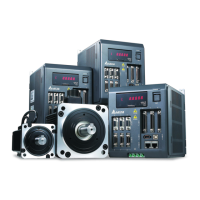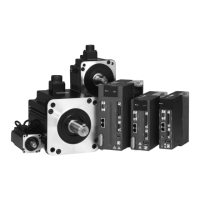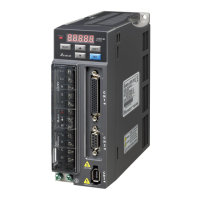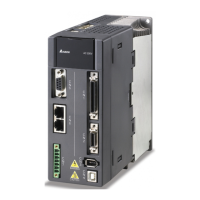Application Examples ASDA Series Application Note
3-32 March, 2015
PR#10: Setup parameter to select the E-cam curve of return trip. Please refer to Figure 3.2.18.
PR#11: Setup parameter to set the pulse number that master axis needs for wrapping 1 layer.
Please refer to Figure 3.2.14.
PR#12: Setup parameter to set the pulse number that slave axis receives from master axis which
is the pulse number that enables E-cam to disengage.
PR#13: Setup parameter to set the path after E-cam disengaging for going trip.
PR#20: Setup parameter to select the E-cam curve of going trip. Please refer to Figure 3.2.18.
PR#21: Setup parameter to set the path after E-cam disengaging for return trip.
PR#9: Jump command. When E-cam curve operates to the position of 360 degrees, it will
disengage and execute this PR. This PR is the jump command which can jump to another PR
path.
PR#55: Setup parameter to enable E-cam. The setting content of E-cam is 0x94021. Among
them, 1 means to enable E-cam; 2 means master axis is the pulse command; 0 means E-cam
engages right after issuing the command; 4 means when E-cam operates to the position of 360
degrees, it will disengage and execute the lead pulse of P5-92. After it reaches the lead pulse, it
will engage right away and execute E-cam curve again and so on and so forth. 9 means after
E-cam disengaging the master axis, it will execute PR#9.
PR#56: Setup parameter to disable E-cam.
PR#51: Setup parameter to disable E-cam for executing the next PR.
PR#52: E-cam rapidly returns to the original point, not the starting point from the middle. It can
be changed according to different demand.
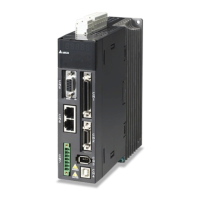
